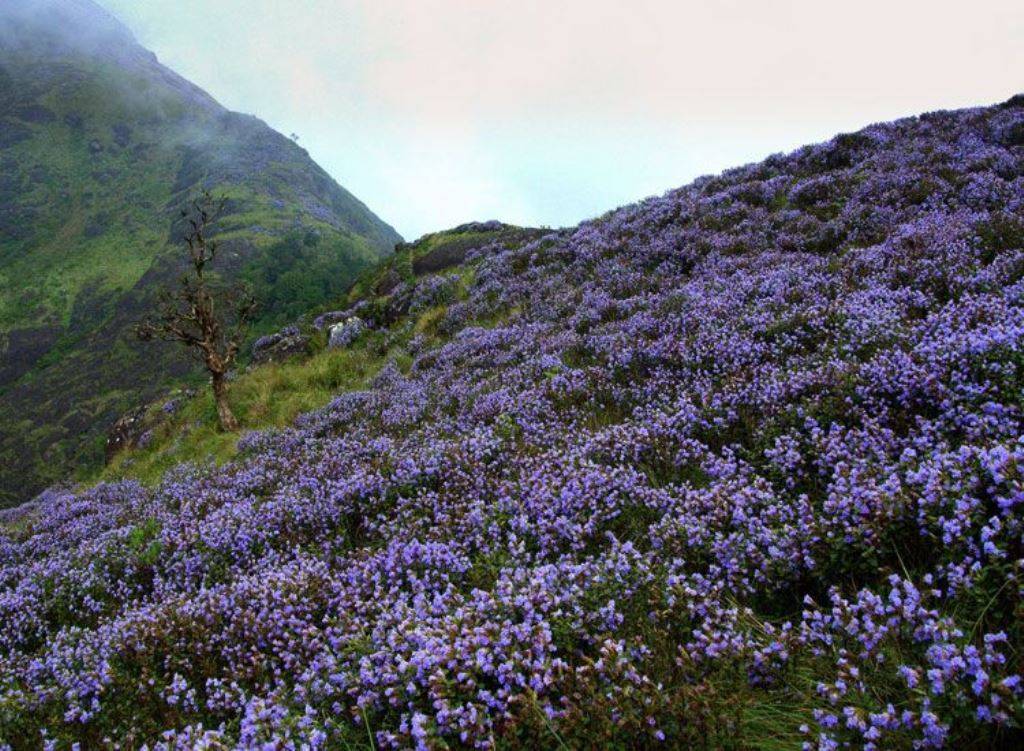
Neela kurunji or 'Strobilanthes kunthiana' is a kind of shrub species of 300 varieties, majority of them is blue in color. 'Neela' translates to 'blue' and kurunji is the name given to it by the tribal’s living in the area. Last seen in 2018, the time for viewing them begins in August and lasts up to October.
In Munnar of Kerala, Anyone can view this great sight from Kovilur, Kadavari, Rajamala and Eravikulam National Park. Eravikulam is the home to the endangered species called Nilgiri Tahr, hosting a majority of the remaining population of the species on the planet.
This is the most rigorously demonstrated, with documented blooming in the year of 1838, 1850, 1862, 1874, 1886, 1898, 1910, 1922, 1934, 1946, 1958, 1970, 1982, 1994, 2006 and 2018. Strange fact is that these have no specific match to solar cycles.
Nature lovers alike mark their calendars in anticipation of this event. Standing amidst the Neelakurunji, one can be transported to a different dimension altogether. One can view the shorter variation (about 1.5 to 2 ft.) at higher spots and longer variations (about 6 to 10 ft.) are seen at lower spots. Several tours for this rarest incident are available during this time period around the area and mountain climbing is organized to view these mind-blowing phenomena of nature. It is like a secret glimpse into heaven from the earth, allowed only once every 12 years.
The Nilgiris means Blue Mountains that came from the wild Neelakurinji flowers which during its blooming season, carpets the whole of the mist-clad hill ranges in a swathe of blue and nothing can resist the tourists to experience the scenic beauty.

Botanists state that there are about 300 species of this plant in several rows that bloom in 10 to 16 years and the legendary and most admired Neelakurinji is the best known among them. About 46 of them are found in India. The Plants that sprouts at long time duration like this is called plietesials. These are mostly found on the hills of higher altitude.
The main habitat of Neelakurunji is the hills of Munnar which is in the Western Ghats. It has become a Landmark of bio-diversity of the Western Ghats. This endemic species is also an indicator of the health of the ecosystem like algae.
It can be claimed as flagship species of the Neelakurinji (Strobilanthes kunthiana) which is a bush with several branches. It means that the plant has been first described from the territory of this river. The plant grows rapidly around Shola grasslands and mountain slopes of the mighty Western Ghats and Nilgiris in India. Neelakurinji blooms in a clustered manner on typical inflorescence stocks following the time cycle.
The flowering season ranges between August and November with a peak period of later September and October although some varieties exhibit little variation in their phrenology. The flower contains a purplish blue color when aged. It looks light sky blue in the earlier stage of blooming.
So, if you are a nature lover then you must not lose the opportunity to visualize this amazing scenario once in a life time.










